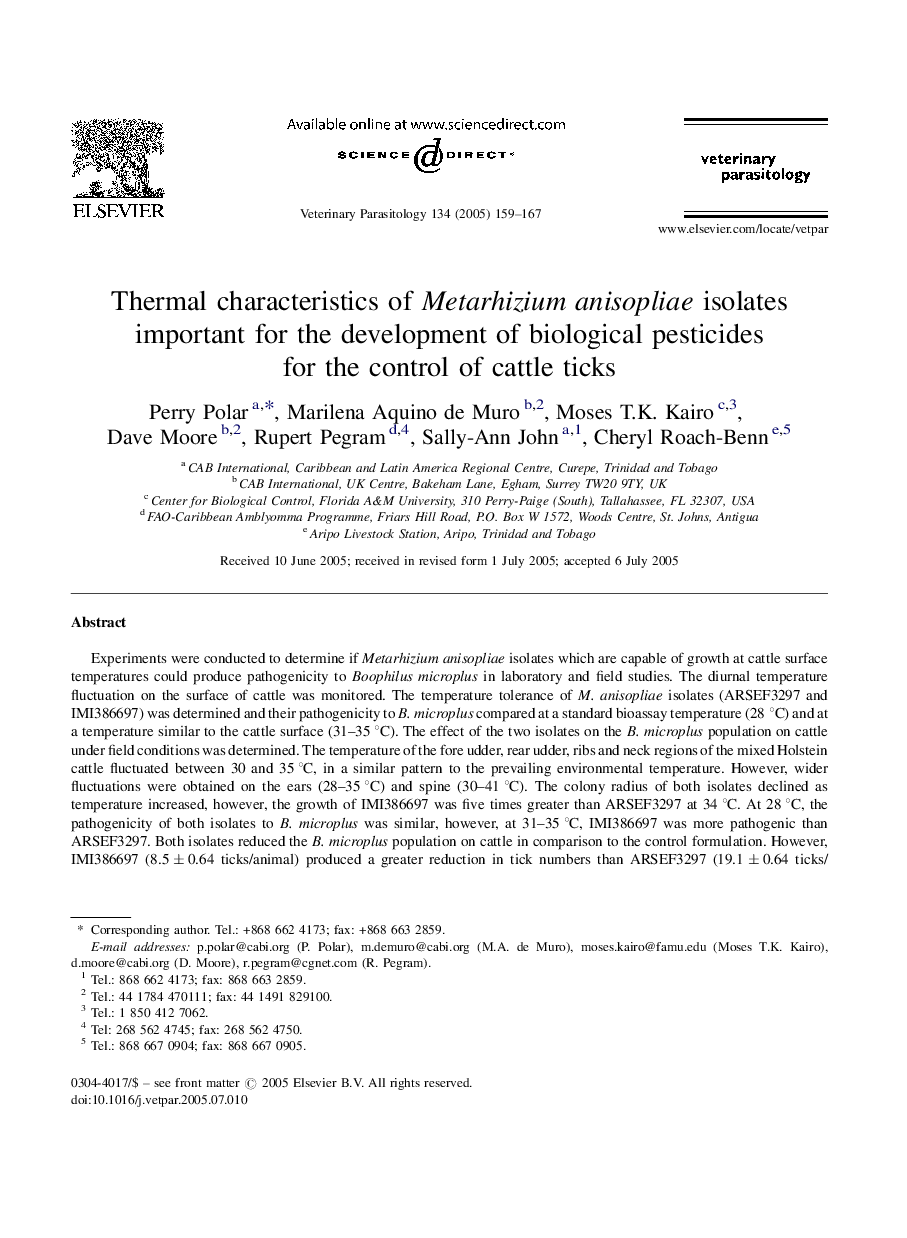| کد مقاله | کد نشریه | سال انتشار | مقاله انگلیسی | نسخه تمام متن |
|---|---|---|---|---|
| 8990932 | 1555802 | 2005 | 9 صفحه PDF | دانلود رایگان |
عنوان انگلیسی مقاله ISI
Thermal characteristics of Metarhizium anisopliae isolates important for the development of biological pesticides for the control of cattle ticks
دانلود مقاله + سفارش ترجمه
دانلود مقاله ISI انگلیسی
رایگان برای ایرانیان
کلمات کلیدی
موضوعات مرتبط
علوم زیستی و بیوفناوری
علوم کشاورزی و بیولوژیک
علوم دامی و جانورشناسی
پیش نمایش صفحه اول مقاله

چکیده انگلیسی
Experiments were conducted to determine if Metarhizium anisopliae isolates which are capable of growth at cattle surface temperatures could produce pathogenicity to Boophilus microplus in laboratory and field studies. The diurnal temperature fluctuation on the surface of cattle was monitored. The temperature tolerance of M. anisopliae isolates (ARSEF3297 and IMI386697) was determined and their pathogenicity to B. microplus compared at a standard bioassay temperature (28 °C) and at a temperature similar to the cattle surface (31-35 °C). The effect of the two isolates on the B. microplus population on cattle under field conditions was determined. The temperature of the fore udder, rear udder, ribs and neck regions of the mixed Holstein cattle fluctuated between 30 and 35 °C, in a similar pattern to the prevailing environmental temperature. However, wider fluctuations were obtained on the ears (28-35 °C) and spine (30-41 °C). The colony radius of both isolates declined as temperature increased, however, the growth of IMI386697 was five times greater than ARSEF3297 at 34 °C. At 28 °C, the pathogenicity of both isolates to B. microplus was similar, however, at 31-35 °C, IMI386697 was more pathogenic than ARSEF3297. Both isolates reduced the B. microplus population on cattle in comparison to the control formulation. However, IMI386697 (8.5 ± 0.64 ticks/animal) produced a greater reduction in tick numbers than ARSEF3297 (19.1 ± 0.64 ticks/animal). M. anisopliae was re-isolated from 8.9% of the ticks collected from IMI386697 treated cattle as compared to 2.8% of ticks from ARSEF3297 treated cattle.
ناشر
Database: Elsevier - ScienceDirect (ساینس دایرکت)
Journal: Veterinary Parasitology - Volume 134, Issues 1â2, 25 November 2005, Pages 159-167
Journal: Veterinary Parasitology - Volume 134, Issues 1â2, 25 November 2005, Pages 159-167
نویسندگان
Perry Polar, Marilena Aquino de Muro, Moses T.K. Kairo, Dave Moore, Rupert Pegram, Sally-Ann John, Cheryl Roach-Benn,